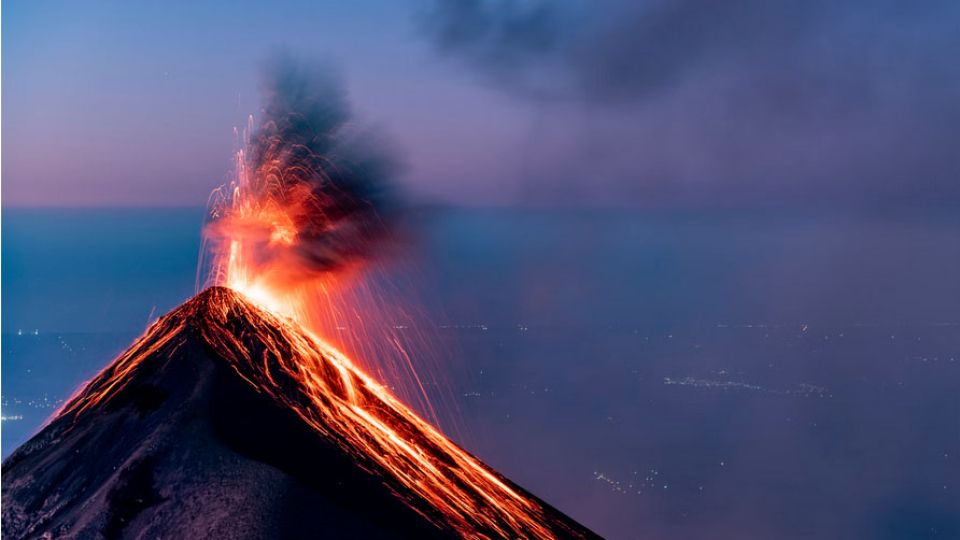April 29, 2024
JAKARTA – Heightened volcanic activities in several regions across the archipelago have prompted residents to remain vigilant, as a number of eruptions have caused fatalities and forced thousands to flee their homes for safety.
Around 11,000 residents living around Mount Ruang in North Sulawesi were ordered to evacuate their homes earlier this month following an increase in Ruang’s eruption intensity.
The Center for Volcanology and Geological Hazard Mitigation (PVMBG) even raised the alert status to awas (warning) level, the highest level of the country’s four-tier volcano alert system, after the volcano spewed hot ash 3,000 meters into the air last week.
In April alone, at least seven volcanoes spread across Sumatra, Java and Sulawesi, erupted. These included Mount Marapi in West Sumatra, which in December last year spewed a 3,000 m ash tower, taller than the volcano itself, into the sky. Twenty-four of 75 people who were hiking on the volcano at that time were killed.
The activity of several volcanoes in the country have increased ever since. Indonesia, which sits along the horseshoe-shaped series of tectonic fault lines around the Pacific Ocean called the “Ring of Fire”, has 120 active volcanoes.
According to recent data from the Center for Volcanology and Geological Hazard Mitigation (CVGHM), at least six volcanoes remained on siaga (watch), the third-highest level of the alert system, as of Friday.
Mt. Ruang is one of the latest volcanoes listed at this watch level. Others include Mount Awu in North Sulawesi; Mount Ile Lewotolok in East Nusa Tenggara (NTT); Mt. Marapi; Mount Merapi in Central Java and Mount Semeru in East Java.
This explainer aims to answer questions that arise regarding potential eruptions ahead and whether there is a connection between the current surge in volcanic activities.
How do eruptions happen?
Volcanic eruptions are caused by hot liquid rock called magma deep within the Earth’s mantle, which rises and creates overpressure on the volcano, leading to eruptions.
Tectonic plates move continuously throughout the year and collide with each other, pressing rock at high temperatures to melt slowly and turn into magma.
In Indonesia, there are three major tectonic plates that intersect and produce magma for volcanoes, namely the Indian-Australian, Eurasian and Pacific.
Since magma is lighter than the surrounding solid rock, it will rise and accumulate in the chambers within the crust of a volcano.
When these chambers are filled and the flow of magma from below continues to climb, tremendous pressure builds up in the chamber, causing an eruption that usually spews hot ash, gas, rocks and lava.
What are the signs of an eruption?
The most common signal that a volcano is about to erupt is a volcanic earthquake, which indicates that magma fluid is in motion.
According to CVGHM head Hendra Gunawan, the frequency of volcanic earthquakes commonly correlates with the intensity of eruptions that happen afterward.
“If earthquakes happen with many varieties, small, medium and large, alternating for several hours, then it is almost certain [that there will be] a big eruption,” he explained.
Apart from earthquakes, volcanoes that are going to erupt usually also emit more gas, causing springs coming from the volcano to heat up.
An increase in seismic activity, however, is not always followed by eruptions as in the case of Mount Gamalama in North Maluku recently. The earthquakes were only followed by a phreatic eruption as the volcano mostly released water vapor and not magma, Hendra explained.
Are eruptions between volcanoes related?
While some volcanoes can experience heightened activity and eruptions at the same time, experts say that the eruptions are not related because the phenomena depend on each volcano’s system to happen.
Hendra said that it was difficult to predict eruptions of a certain volcano, let alone see a connection among the eruptions. “One volcano has [various] characteristics of eruptions, from those happening routinely to [less routine] in a long-term,” he said.
“Eruptions that happen regularly might be caused by the [high pressure] of the shallow magma chamber [close to the crater]. However, [other] chambers with a depth of 20 kilometers might experience larger eruptions every 20-30 years,” Hendra went on.
Meanwhile, volcanologist Surono explained, among the main factors that differentiate the eruption intensity of one volcano from another is the size of each magma chamber.
“If the [size] of the chamber is small, it will fill up quickly, resulting in frequent eruptions. Meanwhile, if the chamber is large, eruptions may be less frequent,” he said.
Additionally, the distance between the chamber and crater can affect the intensity and magnitude of volcanic eruptions.
“Young volcanoes typically have magma chambers that are not too far from the crater, making them easy to erupt,” Surono explained. “This is different from taller [and older] volcanoes, where the magma takes a longer time and needs greater pressure to reach the top [thus] they usually have more explosive eruptions.”
Can Indonesia expect more eruptions?
Hendra said the possibility of increased volcanic activity and eruptions remains, although authorities must always rely on monitoring data.
He took the example of Mt. Awu, which has recorded quite a lot of volcanic earthquakes recently, but the activities may decline over time as the mountain has yet to enter its eruption cycle.
“Mt. Awu has a historical record of erupting once every 30-60 years. It has yet to enter the eruption period in 2024, so there could be fewer volcanic earthquakes [ahead],” he said.
“But if the earthquakes slowly escalate, [we] will prioritize preventive efforts there,” he asserted.


